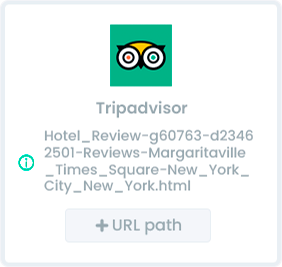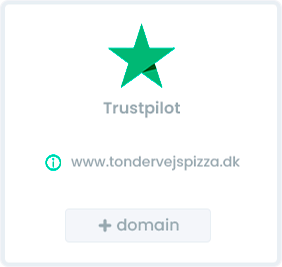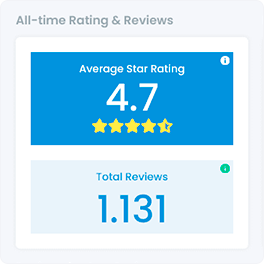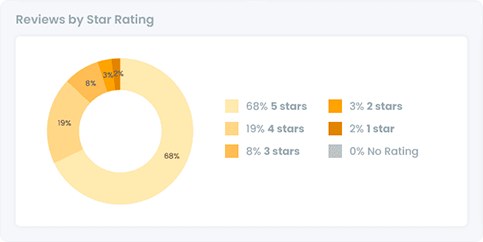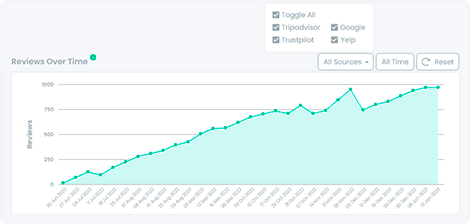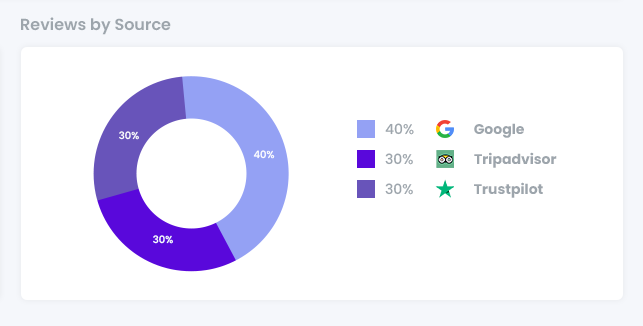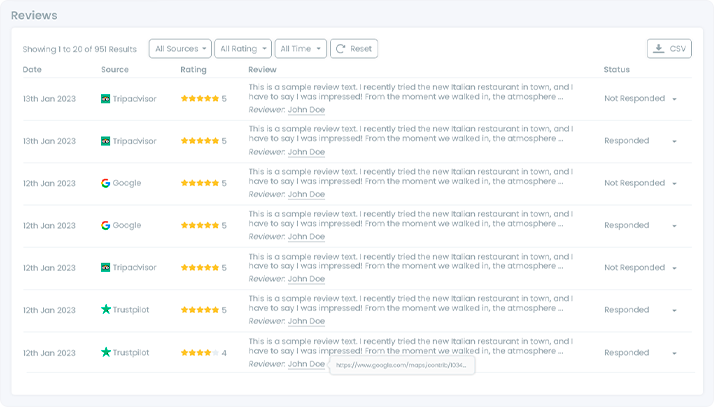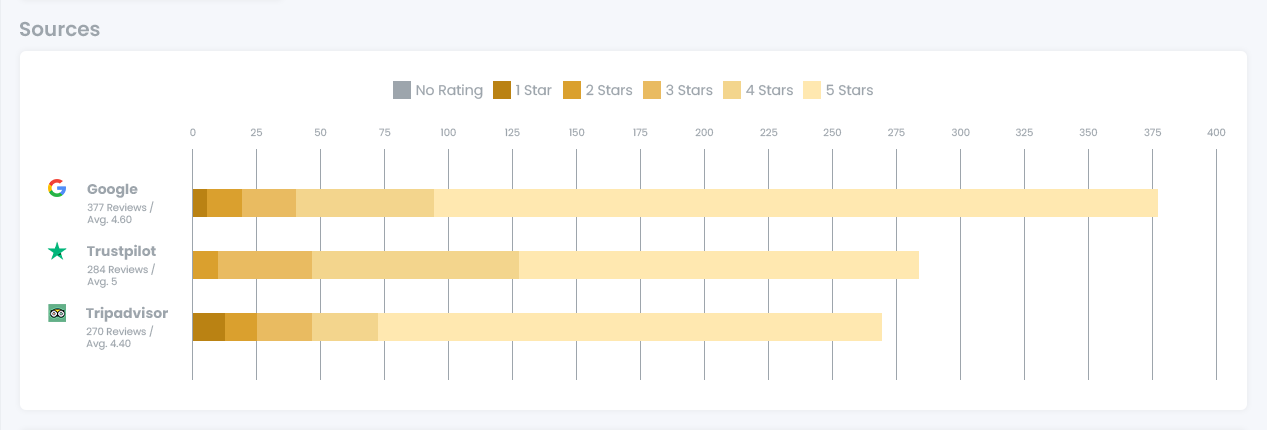Review monitoring tools offer a range of features that help businesses keep track of customer feedback, assess client needs, and maintain an impeccable online reputation.
Above all, they save users from manually searching for reviews on multiple sites, allowing for smooth and efficient feedback management in a single app.
This guide will give you precise instructions for building review monitoring features based on the Business Data Reviews API from DataForSEO.
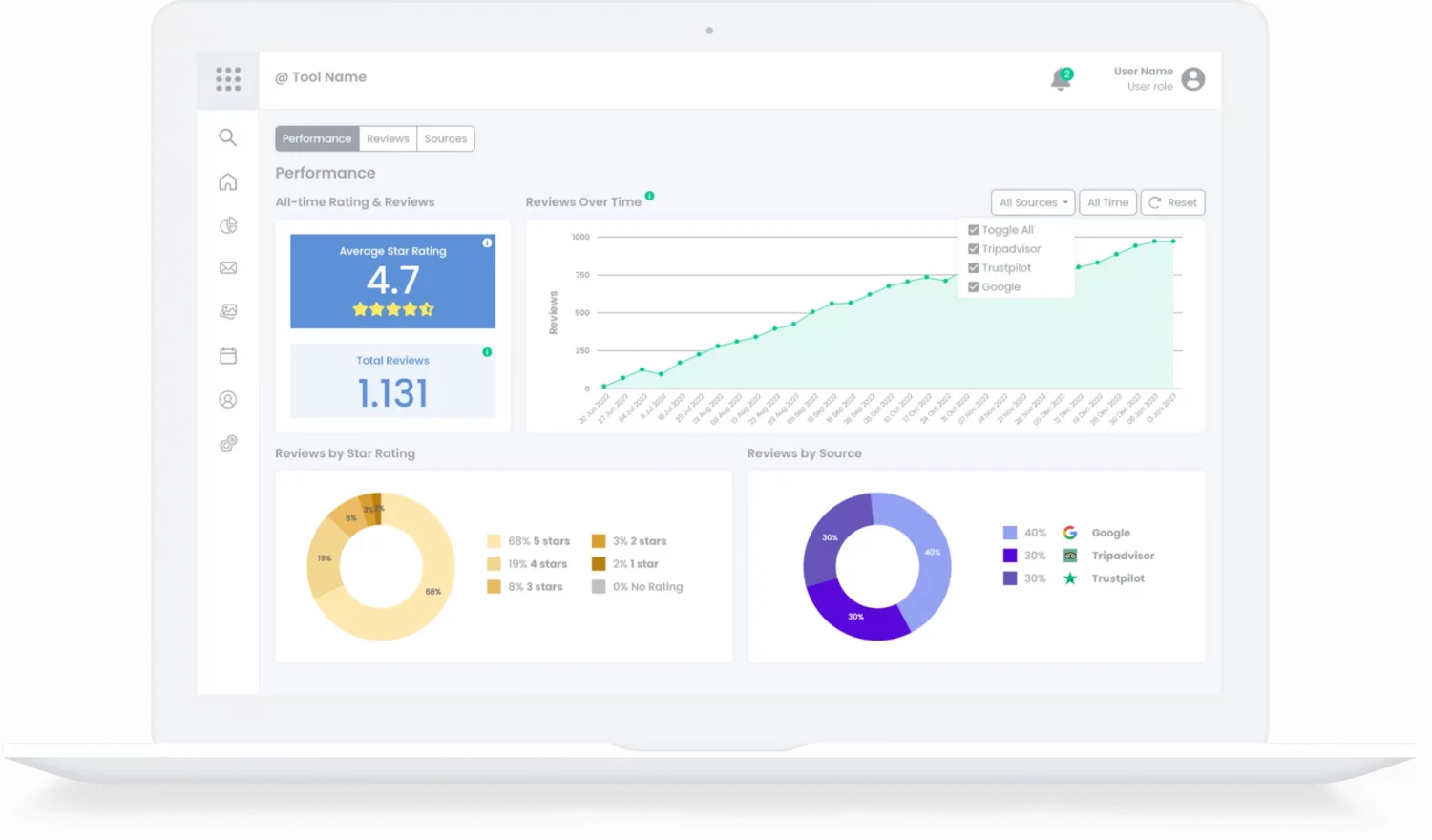
Project Setup
The Project Setup screen immediately invites users to centralize all of their customer reviews from Google, Tripadvisor, and Trustpilot.
To build this feature, and obtain data from all of these review sites for further features, you’ll need to use Google, Tripadvisor, and Trustpilot Reviews endpoints of Business Data API.
Note that working with data from each separate review platform has its own specs. We’ll describe all the details below.
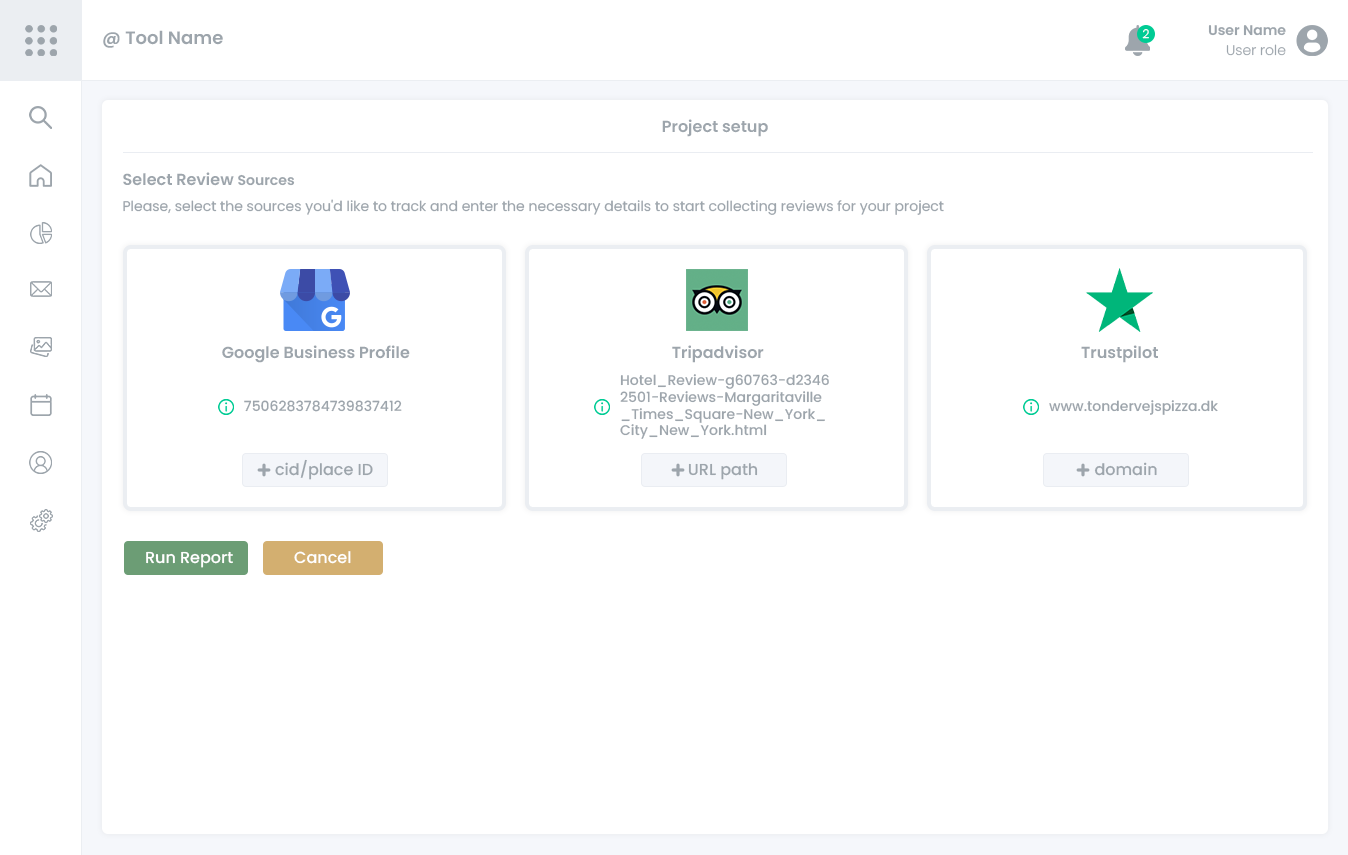
Components
Google Business Profile
To obtain data on reviews from Google Business Profile with DataForSEO Google Reviews API, you need to ask users to indicate one of the following:
- CID - unique, google-defined id of the business entity,
- Place ID - identifier of the business in Google Maps,
- Keyword - the place’s name.
When setting a POST task, you’ll be using eponymous fields. Note that we recommend indicating cid or place_id for the highest accuracy of detecting the target place.
# Instead of 'login' and 'password' use your credentials from https://app.dataforseo.com/api-dashboard
login="login"
password="password"
cred="$(printf ${login}:${password} | base64)"
curl --location --request POST "https://api.dataforseo.com/v3/business_data/google/reviews/task_post"
--header "Authorization: Basic ${cred}"
--header "Content-Type: application/json"
--data-raw "[
{
"location_name": "London,England,United Kingdom",
"language_name": "English",
"keyword": "hedonism wines",
"depth": 50,
"sort_by": "highest_rating"
}
]"
Tripadvisor
If you want to get reviews from a user's Tripadvisor Profile, you'll need to ask them to provide a URL path or a keyword (the name of the place). Use the corresponding fields when setting a task to DataForSEO Tripadvisor Reviews API.
It's worth noting that we recommend using the url_path parameter for most accurately identifying the target place.
You can find the url_path parameter on the Tripadvisor website as part of the URL that points to a particular business entity.
For example, the URL for Margaritaville Resort Times Square on Tripadvisor is:
https://www.tripadvisor.com/HotelReview-g60763-d23462501-Reviews-MargaritavilleTimesSquare-NewYorkCityNewYork.html
The url_path for this entity is HotelReview-g60763-d23462501-Reviews-MargaritavilleTimesSquare-NewYorkCityNewYork.html.
In addition to specifying the target place, you'll also need to use the depth field to indicate the necessary number of reviews to retrieve. Your account will be charged for every 10 reviews returned in the items array. For instance, if you set the depth to 11, you'll be charged for 20 reviews.
# Instead of 'login' and 'password' use your credentials from https://app.dataforseo.com/api-dashboard
login="login"
password="password"
cred="$(printf ${login}:${password} | base64)"
curl --location --request POST "https://api.dataforseo.com/v3/business_data/tripadvisor/reviews/task_post"
--header "Authorization: Basic ${cred}"
--header "Content-Type: application/json"
--data-raw "[
{
"url_path": "Hotel_Review-g60763-d23462501-Reviews-Margaritaville_Times_Square-New_York_City_New_York.html",
"location_code": 1003854,
"pingback_url": "https://your-server.com/pingback.php?id=$id&tag=$tag",
"tag": "some_string_123"
}
]"
Trustpilot
To get reviews published on the Trustpilot platform for a particular local establishment, you'll need to ask users to provide a domain. Use the corresponding field when configuring a POST task to the DataForSEO Trustpilot Reviews API.
You can find the domain parameter on the Trustpilot website as part of the URL that points to a specific local establishment. For instance, the URL for The Pearl Source on Trustpilot is:
https://www.trustpilot.com/review/www.thepearlsource.com.
The domain for this establishment is www.thepearlsource.com.
In addition to specifying the target place, you'll also need to use the depth field to indicate the number of reviews you want to retrieve. Your account will be charged for every 20 reviews returned, such as if you set the depth to 21, you'll be charged for 40 reviews.
You can use this cURL code to set a task:
# Instead of 'login' and 'password' use your credentials from https://app.dataforseo.com/api-dashboard
login="login"
password="password"
cred="$(printf ${login}:${password} | base64)"
curl --location --request POST "https://api.dataforseo.com/v3/business_data/trustpilot/reviews/task_post"
--header "Authorization: Basic ${cred}"
--header "Content-Type: application/json"
--data-raw "[
{
"domain": "www.thepearlsource.com",
"depth": 40
}
]"
Performance
The Performance tab of a review monitoring tool is designed to give users a comprehensive overview of their progress in customer review management on different platforms.
It contains a snapshot of user ratings and the total number of reviews at a single point in time, provides reviews broken down by how many stars they received, features a timeline of growth in reviews acquisition, and allows users to see where their reviews come from.
You’ll have to use the GET endpoints of DataForSEO Google, Tripadvisor, and Trustpilot Reviews APIs to build this view.

Components
All-time Rating and Reviews
The counters in this feature indicate the average star rating and total reviews received for a certain business from all tracked sources.
In particular, you can find the reviews_count field and the value field from the rating object in the responses of GET endpoints of DataForSEO Google, Tripadvisor, and Trustpilot Reviews APIs.
To display the average star rating, find the average for the numbers indicated in the value fields from the rating object of all necessary platforms. To calculate the total number of reviews, summarize data from the reviews_count field of all platforms.
Reviews by Star Rating
The Reviews by Star Rating feature provides the distribution of customer reviews from different sources by star rating.
To build this feature when a user creates a new project, we recommend obtaining all available reviews first. Then, count the number of items (e.g. tripadvisor_review_search) with the same rating value in API responses for each platform separately.
Given the unified structure of the rating object in DataForSEO API responses, you can then easily summarize the data on the number of reviews with the same rating values for multiple review platforms.
To further add updated stats to this feature, use corresponding values from new review items you retrieve.
See Reviews API GET endpoints for Google, Tripadvisor, and Trustpilot.
Reviews Over Time
The Reviews Over Time feature maps out the number of reviews on a timeline of days, weeks, or months, allowing users to identify any changes in the volume of gained reviews over time.
When you need to display this timeline graph for a user that has just created a new project, we suggest collecting all the reviews that are available and then determining the number of reviews from each platform for a particular date - timestamp - in the past.
In other words, compile a list of all reviews for each separate platform and find items (e.g. tripadvisor_review_search) with the same or close dates in the timestamp, then sort the list by timestamp from the oldest to the newest reviews items.
After that, you can summarize data on the number of reviews for the same or close dates for all platforms.
To complete the graph in the future, you can use the following fields when making requests to retrieve new reviews from each source: datetime, reviews_count.
Use GET endpoints of DataForSEO Google, Tripadvisor, and Trustpilot Reviews APIs to obtain data.
Reviews by Source
The Reviews by Source feature allows businesses to see which platforms bring them the highest amount of customer feedback.
To build it, simply use the reviews_count field from the responses of the GET endpoints of DataForSEO Google, Tripadvisor, and Trustpilot Reviews APIs. Then, calculate the sum of reviews from all sources and calculate the percentage of reviews coming from each platform.
Reviews
The Reviews tab is a critical part of any review monitoring tool. It offers a centralized and detailed overview of all customer reviews from various sources in a single table, making it easy for users to keep a close eye on their business’s online reputation.
To produce this view, utilize the GET endpoints of Business Data Google, Tripadvisor, and Trustpilot Reviews APIs.
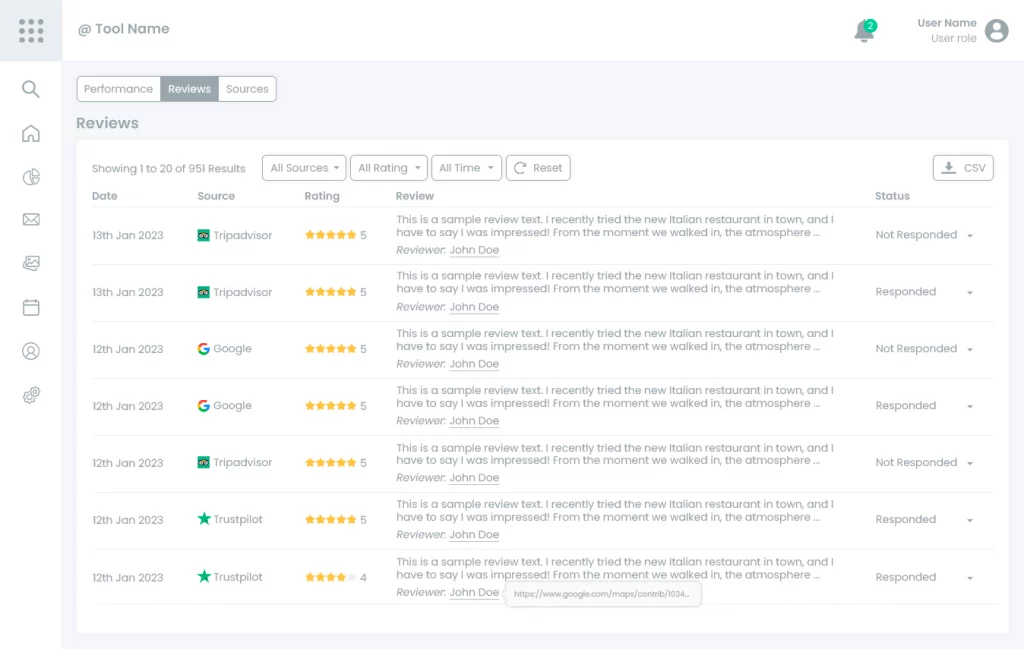
Components
Reviews Table
Reviews Table lists all essential data on customer reviews from the tracked platforms, including review text, rating, and date when the review was published.
The table also presents users with filtering, sorting, and exporting options, and can be used as a convenient reporting tool.
The development process of this feature requires only the usage of data from the GET endpoints of Google, Tripadvisor, and Trustpilot Reviews in Business Data API.



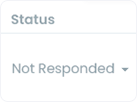
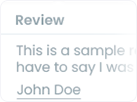
Sources
The Sources tab provides a comprehensive view of a brand’s reputation across different review platforms. It includes the distribution of reviews by platform and the star rating while also highlighting the dynamics of acquiring reviews from each source.
To create this feature, you can utilize the data obtained through the GET endpoints of Google, Tripadvisor, and Trustpilot Reviews of the Business Data API.
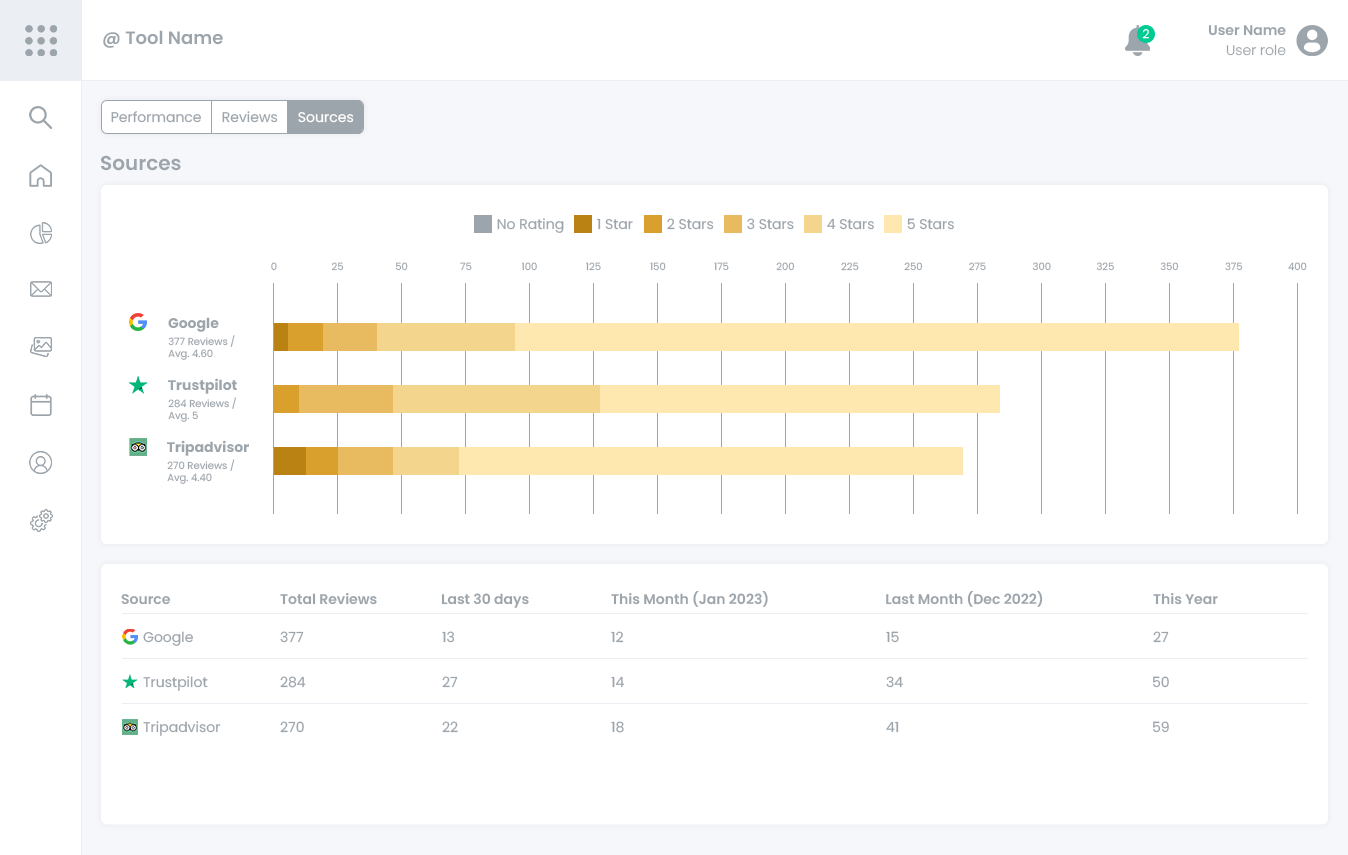
Components
Rating by Source
Rating by Source features charts, each showing the distribution of reviews from a particular review platform, broken down by star rating.
With the help of these charts, users can compare performance across different sources easily.
To get the number of reviews with a particular rating, count the number of objects (e.g. tripadvisor_review_search) in the items array with the same rating value in API responses for each platform.
In order to present the overall number of reviews from each source, use reviews_count from the GET endpoints responses of DataForSEO Google, Tripadvisor, and Trustpilot Reviews APIs.
Reviews by Source and Date
Reviews by Source and Date table shows the number of reviews that came from each tracked platform in the last 30 days, this month, last month and this year.
This chart helps to track a brand's review acquisition rate and better understand how it is changing over time. In order to display this data for a user that has just created a new project, we suggest collecting all the reviews that are available from each source and then determining the number of reviews for a particular date - timestamp.
In other words, count the number of objects (e.g. tripadvisor_review_search) in the items array with the same or close dates in the timestamp.
To complete the table in the future, you can use the datetime, and reviews_count fields from the result array and calculate the difference to find out the number of new reviews compared to the previous time period.
See Reviews API GET endpoints for Google, Tripadvisor, and Trustpilot.
Brand Sentiment Monitoring
Sentiment analysis and brand management SaaS tools enable users to find brand mentions and categorize emotions in texts in a few clicks. In this guide, we will carefully illustrate how DataForSEO Content Analysis API can streamline the creation of essential brand management functionality.
Reviews API
DataForSEO Reviews API supports the largest customer feedback sources on the web: Google, Trustpilot, Amazon, Tripadvisor, Google Play, and App Store. You can get the review’s text, star rating, time of submission, reviewer info, owner’s response, attached images, and more.



